The city of Mysore, located in the southern state of Karnataka, India, is known for its rich history, vibrant culture, and architectural marvels. Amongst its many attractions, the Mysore Palace stands tall as an iconic landmark, drawing tourists from all corners of the globe. With its grandeur, opulent interiors, and exquisite craftsmanship, the Mysore Palace offers visitors a glimpse into the royal heritage of the region.
Mysore Palace in Karnataka
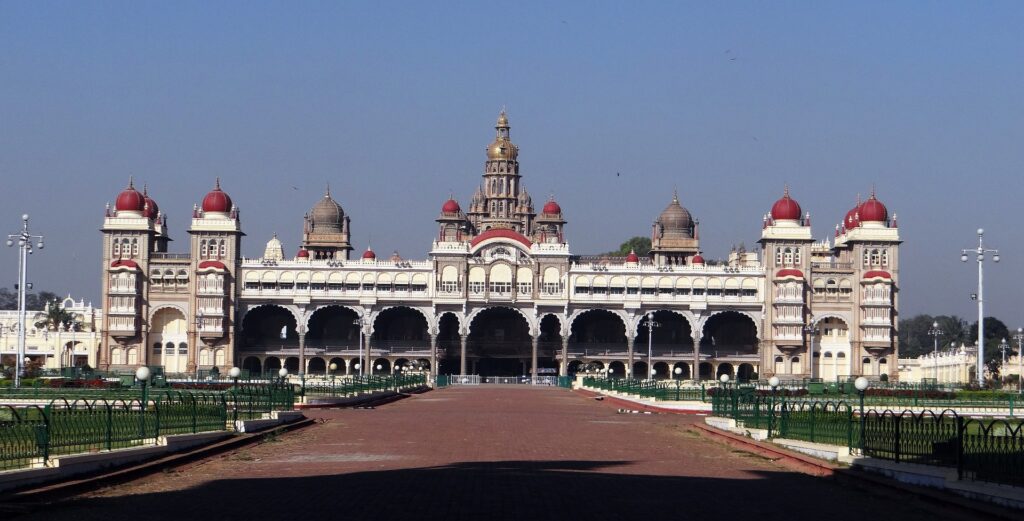
Situated in the heart of the city, the Mysore Palace, also known as the Amba Vilas Palace, is the official residence of the Wadiyars, the royal family of Mysore. Spanning over an area of around 42 acres, the palace complex is a breathtaking sight to behold. Every year, thousands of tourists flock to witness the architectural splendor and immerse themselves in the regal ambiance that surrounds the palace.
The origin of the Mysore Palace in Karnataka dates back to the 14th century when a fortress was built on the same site. However, the palace we see today is the result of various renovations and reconstructions over the centuries. The current structure was completed in 1912, after the old palace was destroyed by fire in 1897. With its Indo-Saracenic architectural style, a fusion of Hindu, Muslim, and European influences, the palace is a true testament to the architectural brilliance of its time.
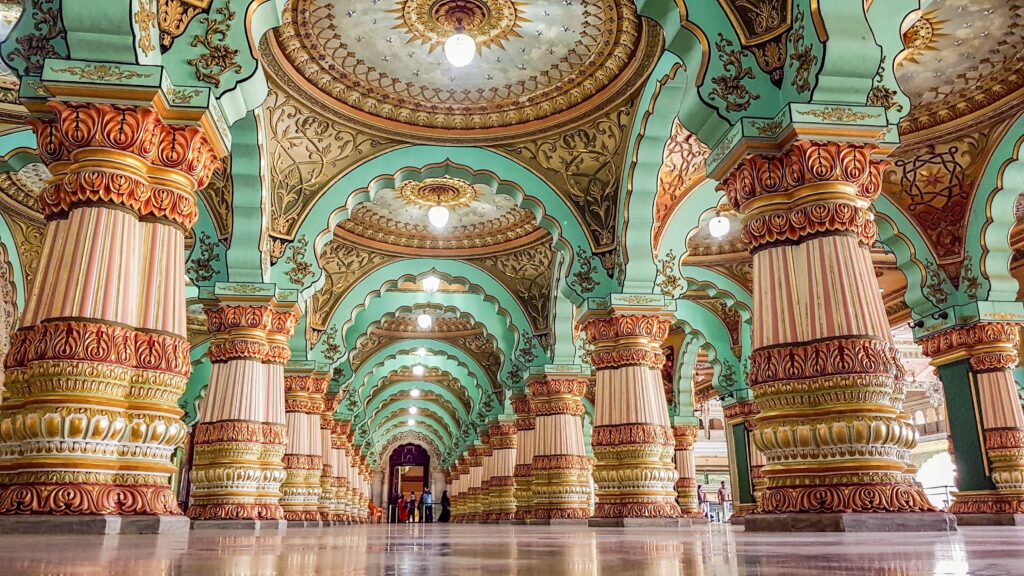
As one approaches the grand entrance of the palace, a sense of awe strikes the heart. The palace is a harmonious blend of domes, arches, turrets, and vibrant colors. Its three-storied structure exhibits intricately carved pillars, beautifully painted ceilings, and stunning stained-glass windows. The palace is illuminated every evening, allowing one to witness its enchanting beauty in a different light.
More:Read About Witness The Traditional Martial Arts of Kerala
The interior of the palace is just as captivating as its exterior. As you step inside, you are greeted with a sense of magnificence. The Durbar Hall, also known as the Public Audience Hall, is the first space one encounters. Its ornately designed ceiling, elegant chandeliers, and marble flooring make for an impressive sight. The Durbar Hall served as the venue for formal ceremonies and gatherings during the reign of the Wadiyars.
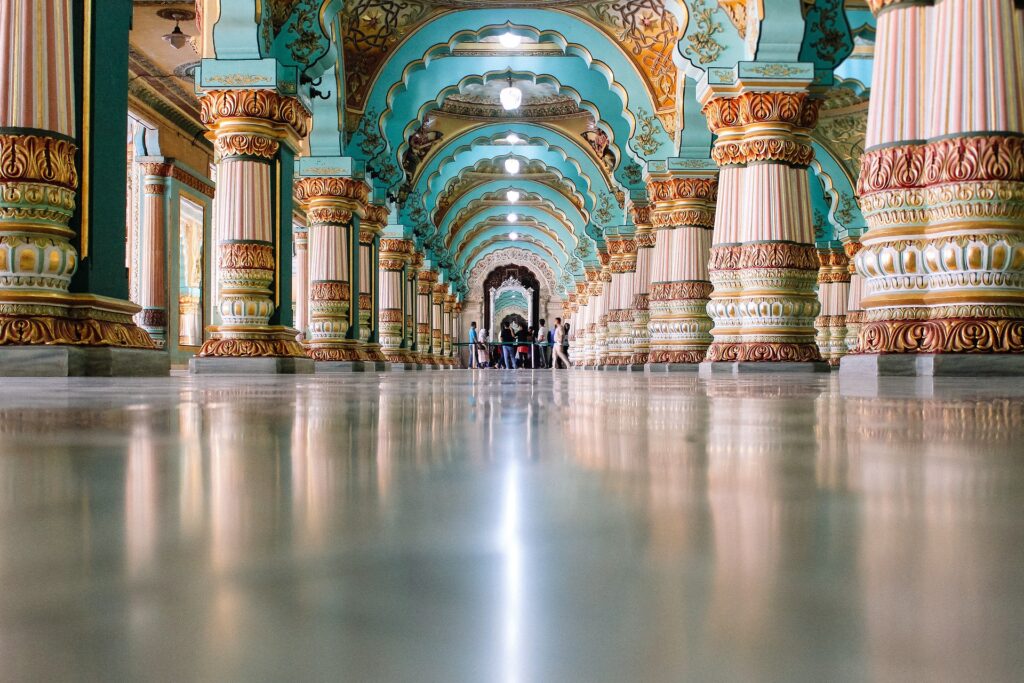
The palace boasts an impressive collection of artifacts, including exquisite paintings, antique furniture, sculptures, and weaponry. The Private Durbar Hall, located adjacent to the Durbar Hall, offers a more intimate setting with its richly embellished walls and ceiling. The royal family’s personal belongings, including photographs and personal memorabilia, are also on display, giving visitors a glimpse into their private lives.
More: Wanted to download Odisha Magazines, visit here
One of the highlights of theMysore Palace in Karnataka is the Kalyana Mantapa, the marriage hall. This magnificent hall, adorned with intricate floral motifs and beautiful stained glass, was built in commemoration of the royal wedding of Krishnaraja Wadiyar IV. The Kalyana Mantapa showcases the artistic prowess of the artisans of that era and is often used for cultural events and weddings to this day.
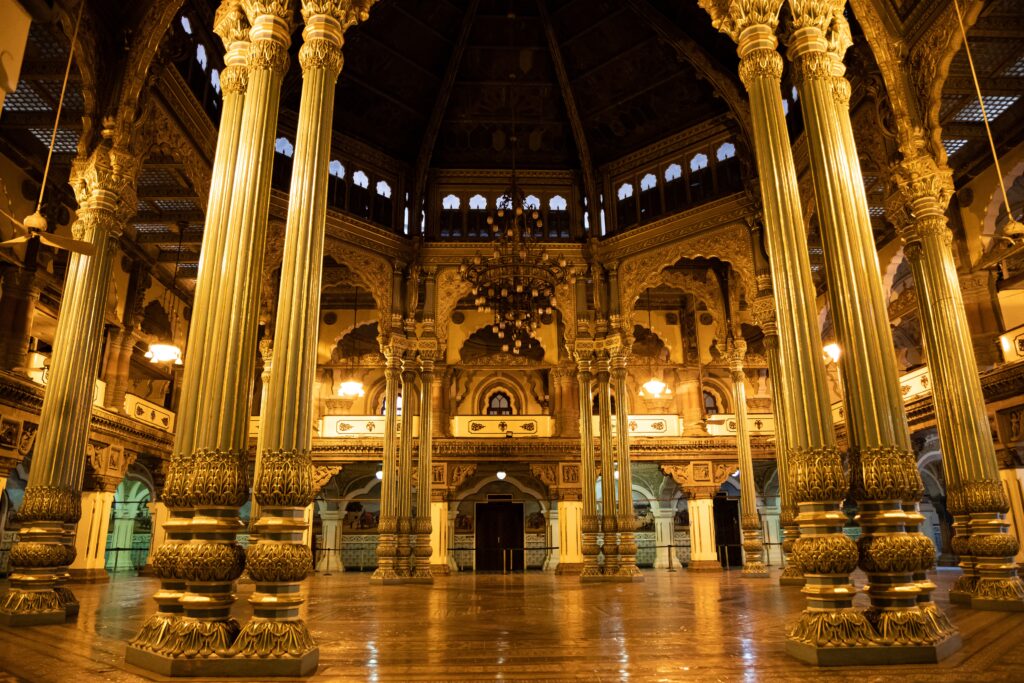
Surrounding the palace are well-maintained gardens, adding to the charm of the complex. The palace gardens are adorned with colorful flowers, lush green lawns, and well-manicured paths, providing a serene retreat for visitors. A musical fountain show held in the premises of the palace is a favorite among tourists, where rhythmic patterns of water synchronized with music creates a mesmerizing experience.
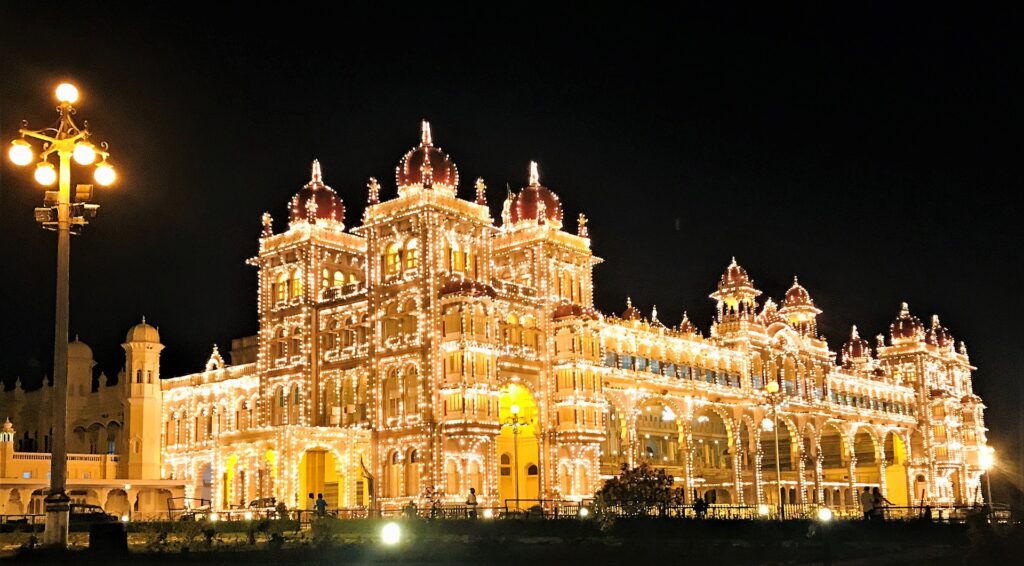
While the Mysore Palace is a sight to behold during the day, it is transformed into a magical wonderland at night. Every Sunday and on public holidays, the palace is illuminated with countless lights, creating a breathtaking spectacle. This illumination brings out the intricate details of the palace’s architecture and offers a splendid view. Witnessing the palace’s grandeur under the glittering night sky is an experience that captivates the soul and leaves a lasting impression.
In addition to its architectural magnificence, the Mysore Palace holds immense cultural significance. It serves as the backdrop for the grand Dasara festival, a traditional celebration that commemorates the victory of good over evil. During this ten-day extravaganza, the palace is adorned with thousands of lights and decorations, attracting hundreds of thousands of visitors. The illumination of the palace during Dasara is a spectacle that must not be missed.
Undoubtedly, a visit to Mysore is incomplete without exploring the architectural gem that is the Mysore Palace. Its grandeur, rich history, and cultural significance make it a must-visit destination for tourists and history enthusiasts alike. As you wander through the opulent halls and witness the artistic marvels, you can’t help but be transported back in time to an era of kings and queens. The Mysore Palace truly captures the essence of a bygone era and is a testament to human craftsmanship and ingenuity.
Where is the Mysore Palace located?
The Mysore Palace is located in the city of Mysore, in the state of Karnataka, India.
What is the Mysore Palace in Karnataka famous for?
The Mysore Palace is famous for its exquisite architecture, rich history, and being the official residence of the Wodeyar dynasty, who ruled the Kingdom of Mysore from 1399 to 1950.
What are the visiting hours of the Mysore Palace in Karnataka ?
The Mysore Palace is open for visitors from 10:00 AM to 5:30 PM on all days of the week, including weekends and public holidays.
Is there an entrance fee to visit the Mysore Palace in Karnataka ?
Yes, there is an entrance fee for visitors. The fee varies for different categories of visitors, such as Indians, foreign tourists, and students. Please check the official website or inquire at the ticket counter for current pricing.
Are there any facilities available for tourists aMysore Palace in Karnataka?
Yes, the Mysore Palace offers various facilities for tourists, including restrooms, a cloakroom to store your bags, souvenir shops, and refreshment stalls where you can purchase snacks and drinks.

